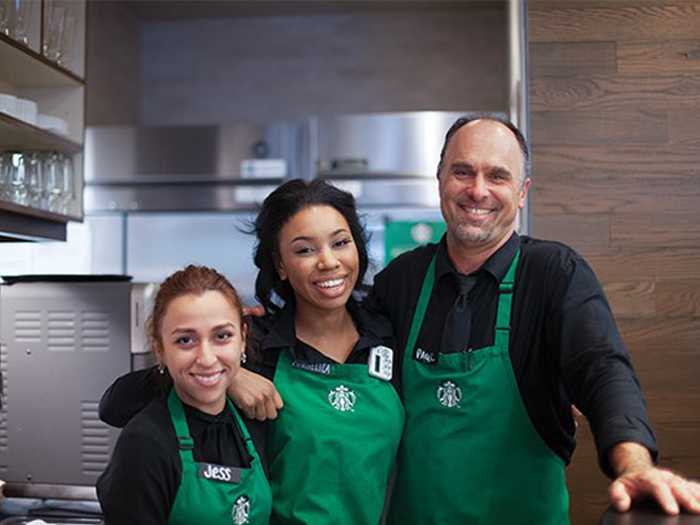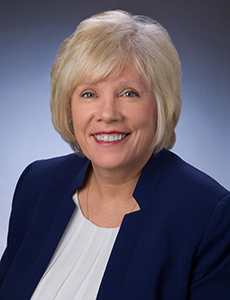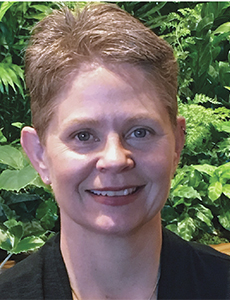Why Employers Looking to Effectively Implement Telemedicine into Their Workers’ Comp Program Could Take a Page Out of Starbucks’ Book

The use of telemedicine has increased in the wake of the COVID-19 pandemic. The ability to access health care from anywhere at any time is a valuable option for people who want to avoid visiting a medical facility for fear of exposure to others who may have coronavirus.
The Centers for Disease Control and Prevention reported that “during the first quarter of 2020, the number of telehealth visits increased by 50%, compared with the same period in 2019.” Another report found that the market demand for telemedicine is projected to reach $185.6 billion by 2026.
As part of this trend, many states are loosening restrictions and updating regulations both under emergency regulations and permanently, enabling more opportunities for employers to use telemedicine as a viable treatment option for their injured and ill employees.
“There is a compelling argument that employers should include telemedicine in their workers’ compensation programs,” said Ann Schnure, vice president of telemedicine operations at Concentra. “The whole conversation around telemedicine has changed from ‘why should I bother with this’ to ‘we need to be offering this to our employees.’ ”
However, it is imperative that employers get telemedicine right.
“Telemedicine for occupational injury care is not the same thing as telemedicine for a health-related issue, such as strep throat,” Schnure explained.
“Telemedicine is also not a one-and-done appointment for all injuries. Employers need to understand what injuries are appropriate for telemedicine. Telemedicine is appropriate for relatively minor sprains and strains, abrasion, burns and more, but employees with injuries that require hands-on care, like stitches, still need to be seen in person by a clinician.”
Many companies have been successful implementing telemedicine — Starbucks Coffee Company, for one.
The Starbucks Telemedicine Story
Starbucks operates more than 28,000 stores across the globe, with 170,000 employees — or partners, as Starbucks calls them — in the U.S. alone. At any given time, the company can have thousands of open workers’ compensation claims across a number of jurisdictions in both rural and urban areas.

Ann Schnure, vice president of telemedicine operations, Concentra
It’s a lot to keep in line when it comes to getting partners the best access to care in the event of an injury.
“Telemedicine acts as another tool for our injured partners to receive prompt, appropriate care,” said Noreen Olson, RN, MN, COHN-S, ARM, manager of claims, risk management at Starbucks.
The Starbucks telemedicine story started six years ago, when Olson first joined Starbucks’ workers’ comp team.
With a background in health care, Olson had a very different view on how to approach a workers’ comp program: “In the health care industry, we often had access to triage opportunities or on-site occupational health clinics immediately,” she explained.
“When I came to Starbucks, it was a very different story.”
Due to the smaller size of individual retail stores and the way business is conducted within them, immediate triage access was hard for Starbucks to implement across its many stores effectively.
“That got us thinking about what else we could do to make care timely and private for partners. Telemedicine was the obvious answer,” Olson said.
Partnership and Engagement Across All Streams
But Starbucks was not alone in its quest for a telemedicine solution. Early on, the coffee giant reached out to its workers’ comp partners: Sedgwick, Genex Services and Concentra. Olson worked alongside her partners and the Starbucks’ team to develop a telemedicine solution that was a perfect fit for the business and met the unique needs of Starbucks’ workforce.
They got it right. Each telemedicine partner has since played a key role in the success of Starbucks’ program.
“Collaboration is critically important,” said Olson. “We want expert eyes looking at a proposed solution from many different angles.”
Genex advises on how Sedgwick and Starbucks speak to the partners about medical care options and what is appropriate for their respective injuries. Sedgwick advises Starbucks on any jurisdictional limitations around the issues of directing care versus making options available for partners. Starbucks and Concentra work together to guarantee both provider and partner understand what is necessary to get the partner back to work safely.
And it all started with how Starbucks decided to engage its partners in their claim and recovery.
“We have an informational bag tag attached to our First Aid kits that contains both Sedgwick’s number and Concentra’s telemedicine information so that our partners will have immediate access to help,” Olson said.
Partners call Sedgwick’s service center to report their injury. This — partner self-reporting — has been a crucial element of success for the team, according to Shawn Hagist, CPCU, ARM, CPDM, director client services at Sedgwick.
“The partner calls into Sedgwick and goes through the intake process, providing details about what happened, how the injury occurred, and so on,” Hagist said. “Having the partner call in themselves has reduced overall lag times from the time of injury to when the claim is set up.”

Noreen Olson, manager of claims, risk management, Starbucks Coffee Company
This idea of placing the claim into the hands of the partner also earned Starbucks a 2018 Teddy Award from Risk & Insurance®.
Sedgwick is equipped with the right dialogue to provide partners with appropriate next steps for treatment once they call in.
“We collaborated — Concentra, Sedgwick, Genex — on what that telemedicine message should be,” Hagist explained.
And now that they’ve found it, they stick to it.
“When you have a team working on a case, and all partners are getting the same information … that consistency is reassuring. That creates a program where the partner knows they’re getting the right care” Judy Pressnall, RN, CCM, TCM supervisor for Genex Services, said.
In addition, the teams have found results collaborating on:
- Program training. Concentra provided Sedgwick examiners with training on what types of injuries and diagnoses were suitable for telemedicine.
- Sedgwick and Genex worked to create a one-page PDF known as the Genex Medical Information Guide that provides Sedgwick’s service center with the language needed to explain telemedicine as an option.
- Concentra has created video clips in partnership with Starbucks to demonstrate to clinicians the day-to-day task requirements of a Starbucks barista. This enables clinicians to fully understand what is required of the barista.
- Starbucks, dedicated to being a diverse and inclusive employer, also partnered with Concentra to create safety videos with closed captioning so that deaf partners could embrace the information without difficulty.
Why Employers Should Emulate Starbucks
The telemedicine program Starbucks implemented originally is not the same as the telemedicine program it’s running today.
Throughout the years, and armed with the feedback of its partners, Starbucks grew the telemedicine program, facing challenges head on and improving upon what they know works.
“Initially, a lot of people didn’t take advantage of telemedicine,” said Pressnall. “There was reluctance because it was a new program, and there’s a comfort in seeing a doctor face-to-face.”
But the Genex telephonic case management team worked to ease partners’ minds.
“With that little reinforcement, the program went a long way,” she said.
Quarterly review calls between Starbucks, Genex, Sedgwick and Concentra on utilization and opportunities for growth also enable the team to improve the program.
“We look through the lens of our partners,” Olson said. “Is the program working for them, do they find it satisfactory? Are they getting better and returning to work?”
“We also update each other on statistics and metrics around specific areas of the program,” Hagist added. “That way we know where the trends are going.”
“Starbucks has become a great example for other employers on telemedicine,” said Concentra’s Schnure. “Starbucks looked at its processes and determined how to implement telemedicine into its process and culture that is unique to them. Starbucks had a very thoughtful approach, looked at adoption and then tweaked the program again and again to continue to get it right.”
For other employers looking to embrace telemedicine, Olson advises this: “Employers must take the time to understand the injury profile among their employees and make sure that as they’re promoting telemedicine, they’ve identified the right kinds of injuries that are appropriate for telemedicine visits.
“Then, choose the right partners and work together for the best results,” she said. &










